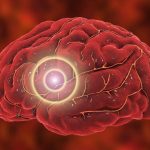
TUESDAY, Nov. 21, 2023 (HealthDay News) —Traffic, crowds and unforeseen delays and disruptions can turn holiday travel from celebratory to chaos in a flash — especially if you’re prone to anxiety. Being aware of your triggers can help you be ready for any glitches that arise. “Triggers might include uncertainty of traffic, flight delays, being in public places, or seeing friends and family for the holidays,” said Dr. Asim Shah, a professor and executive vice chair of psychiatry and behavioral sciences at Baylor College of Medicine in Houston. “Based on your triggers, you can make a plan.” A good plan starts with getting plenty of rest the night before your trip, eating healthy, and avoiding alcohol and drugs, which can make anxiety worse, Shah said in a Baylor news release. He suggests working out before you head out the door, because the endorphins released during exercise help ease anxiety and nervous energy. “Have a plan, distract yourself and reassure yourself that you are safe,” he said. If flying makes you anxious and time permits, take the car instead of a plane, but try to stay off the road during rush hour, Shah suggested. If you are traveling by air, consider booking your trip so you can arrive a day early. Shah also recommends leaving in the morning and having a backup plan in case your… read on > read on >


























-300x200.jpg)










